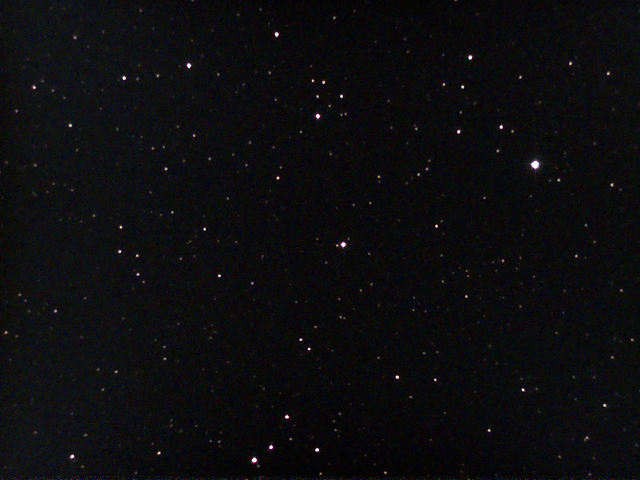The 1970s saw the amazing beginning of our explorations of the outer Solar System. Pioneer 10 launched in 1972. It became the first space probe to fly through the asteroid belt and past the giant planet Jupiter. About a year later Pioneer 11 was launched on a journey to both Jupiter and Saturn. The exploits of these two probes are forgotten by many but they paved the way for their successors, Voyager 1 and 2.
Voyager 1 flew past Jupiter and Saturn, while Voyager 2 visited these two gas giant planets and the ice giant planets of Uranus and Neptune.
Their flybys past these giant planets put the Pioneer and Voyager probes on trajectories that propelled them out of our Solar System and into interstellar space. The Pioneer probes functioned until the early 2000s. The Voyagers are still in operation and have been returning data on the region of space just beyond the influence of our Sun.
In late February I pointed my Unistellar eVscope at the location of the Pioneer 10 probe. It’s in the direction of the constellation of Taurus, the Bull, along one of the Bull’s horns At the time its distance from us was 127.7 times Earth’s distance from the Sun (127.7 astronomical units). That’s almost 12 billion miles. At that distance, if we could still receive radio messages from it, it would take almost 18 hours for them to cross the gulfs of space to reach Earth. That's 18 light hours. While that is quite far, keep in mind that the nearest star to the Solar System is more four light years away.
You can’t see Pioneer 10 in this image, but it is there, somewhere near the middle, alone and drifting outward as it will do forever.
Knowing exactly where to look is simplified by use of a planetarium program such as SkySafari Pro. Here’s how I used it to track down my next target, Voyager 1. It is in the huge constellation of Ophiuchus, near to its border with Hercules. SkySafari Pro gives me its coordinates and a visual image of its location against the starry sky. Next I point my trusty eVscope to the coordinate and take an image. Remember, the probe itself is completely invisible, but for me just knowing that Voyager 1 is out there somewhere in that field of stars is enough for me to stop and wonder.
In the image above I've blinked my photograph with the SkySafari Pro finder chart which marks the location of Voyager 1.
How far is Voyager 1 from Earth? 153 astronomical units. That’s over 14 billion miles. Its feeble radio signals that reach back to Earth take more than 21 hours to get here.
My final target isn’t as far away as Voyager 1, but it is in a more visually interesting position of the sky. Pioneer 11 is only 105 astronomical units from Earth. It is in the direction of the small constellation of Scutum, the Shield. More importantly it is just under 8 arc minutes (a minute of arc is 1/60 of a degree) from the globular star cluster known as NGC 6712. This means that if you ever observe the star cluster with a wide-field telescope there’s a good chance that you’ll also be seeing the location in the sky of Pioneer 11, and just maybe a photon or two of reflected light from the spacecraft.
Pioneer 11 is somewhere near the middle of this image. The light of the stars in the cluster take more than 26,000 years to reach Earth while any reflected light off of Pioneer 11 takes 14.5 hours to reach Earth.
Here's the finder chart from SkySafari pro marking its location in the sky. There’s one other object made by humans that is speeding out of the Solar System. That’s the New Horizons spacecraft which flew past dwarf planet Pluto in 2015 and then to the small Kuiper Belt Object known as Arrokoth three and a half years later. I haven’t targeted that region of the sky yet. Maybe I’ll do so sometime soon on a clear summer night.





No comments:
Post a Comment